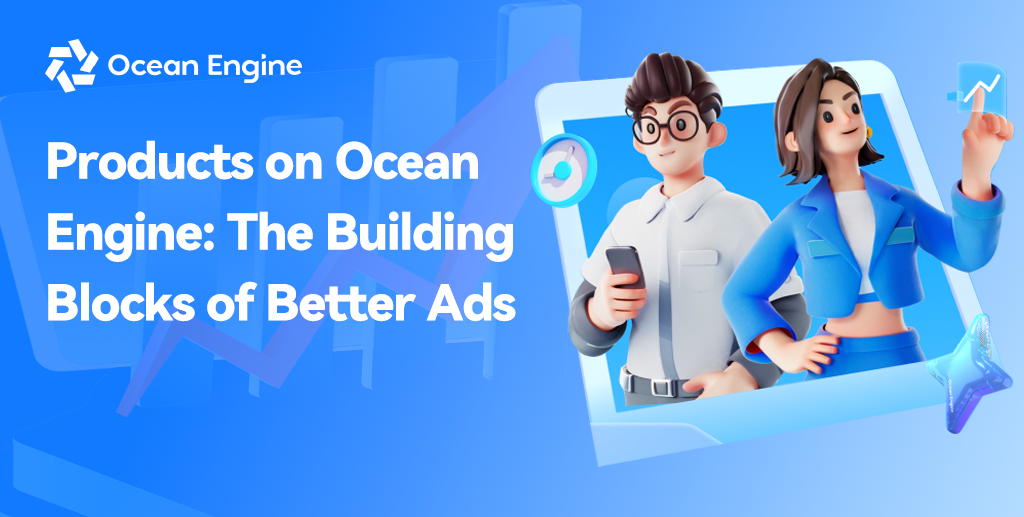
Products on Ocean Engine: The Building Blocks of Better Ads
In today’s advertising landscape, where platforms process millions of signals to decide ad placement, the intelligence of these algorithms is fundamentally limited by the quality of the information they receive. Fragmented data creates blind spots, leading to mistimed campaigns and missed opportunities to reach the right audiences.
While ad creatives are essential for grabbing attention, they alone cannot guarantee relevance. This is precisely where structured product data becomes transformative. As a strategic asset, it powers smarter targeting, optimizes delivery algorithms, and crucially bridges the gap between user intent and brand offerings. By enhancing product library management — Ocean Engine’s unified Product Center, advertisers provide the delivery system with a clear understanding of what’s being sold. This central hub for managing product information enables smarter targeting and ultimately drives higher campaign performance, making structured product data the core engine behind effective performance advertising.

What is a “product” on Ocean Engine?
A “product” on Ocean Engine’s ecosystem covers any promotable item that can be featured in an ad creative. This includes traditional SKUs from e-commerce catalogs, business services, mobile apps, and even content pieces like articles or videos that drive engagement.
Each product entry serves as a data point that informs the platform’s machine learning models about user preferences, seasonal trends, and conversion patterns. When a user interacts with an ad featuring a specific product, that interaction creates valuable signals that improve future targeting decisions.
What is Ocean Engine’s Product Center?

The Product Center, accessible via the platform console, plays a vital role in closing the loop between advertisers, the delivery system, and the user experience. With the launch of Ocean Engine’s unified Product Center, marketers and advertisers now have a central hub to manage key product-related information across their entire catalog.
Centralized product management allows advertisers to express their marketing objectives more comprehensively, enabling the delivery system to quickly link products to ad campaigns and ensure improved delivery logic. By helping the system better understand the products being promoted, it becomes more adept at understanding content, optimizing rankings, and matching product offerings with the right audiences more accurately. The impact on performance is significant. On average, ads leveraging structured product information see click-through rates increase by 8% or more, with some categories experiencing even higher improvements.
Relevant product displays improve user experience, driving user engagement and positive feedback. This feedback enables advertisers to refine products and creatives, creating a virtuous optimization cycle where product data management becomes equally critical as creatives for sustainable advertising success.
Why it matters: Key benefits of product management
A well-managed product library acts as the foundation for smarter targeting, faster execution, and better results. Below are three key benefits of structured product management.
1. Better performance through relevance
The first benefit is improved campaign performance. With access to detailed product information—including attributes, categories, pricing, and availability—algorithms can make more intelligent decisions about ad placement and timing, which also enables cross-selling and upselling techniques.
2. Support applications across business scenarios
The accumulated product information extends its support to applications across other business scenarios.
As the product library undergoes gradual optimization and iteration, the data can be integrated and utilized by more platforms, including the Ocean Creator Marketplace, Douyin Business Account, and omni-advertising traffic collaboration.
3. Align multiple perspectives
Aligning multiple perspectives creates a positive feedback loop that benefits advertisers, users, and the delivery system. By accumulating and applying brand asset information and user signals, the system gains a better understanding of advertisers’ marketing needs. This enables advertisers to present higher-quality products and creatives to users, who in turn are exposed to more relevant and engaging ads—ultimately driving higher conversions.
Best practices for managing product libraries
To unlock Ocean Engine’s Product Center, product data must be not only available but also clean, consistent, and campaign-ready. Follow these best practices to maintain advertising success.
1. Ensure complete and standardized information
Include accurate titles, categories, attributes, and media. The more structured the product data, the better the platform can optimize delivery.
2. Avoid duplicate product creation
Keep your product library clean and efficient by managing updates, not recreating entries.
3. Align product content with creatives
Ensure consistency between product descriptions and what appears in your creatives. This prevents mismatches and boosts trust.
Conclusion: Structure drives scale
Success with Ocean Engine’s Product Center requires more than good intentions — it demands a commitment to structured workflows that treat product data as a strategic asset. This means establishing clear data management processes and continuously optimizing based on performance insights.
Critically, the product library requires active input from advertisers to enrich product information. This advertiser-provided data enables the system to more accurately identify and reach target audiences. When combined with high-quality creatives, this enriched data delivers a stronger, more relevant user experience.
As advertising moves toward deeper automation and personalization, brands that invest in structured product management today will lead the market tomorrow. Those that don’t risk falling behind, relying on guesswork while competitors gain an edge through data-driven precision.
Ready to take control of your product data? Explore the Ocean Engine Product Center and start building better ads from the ground up.



